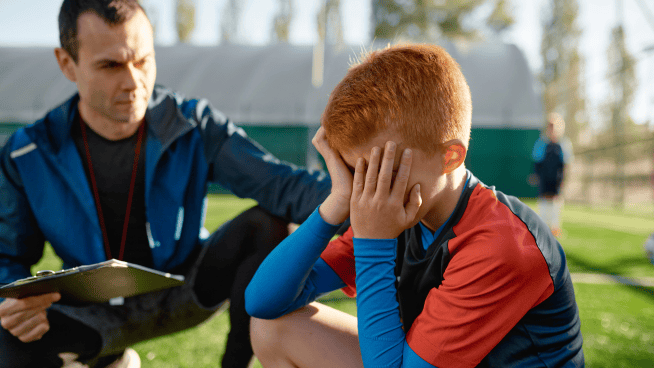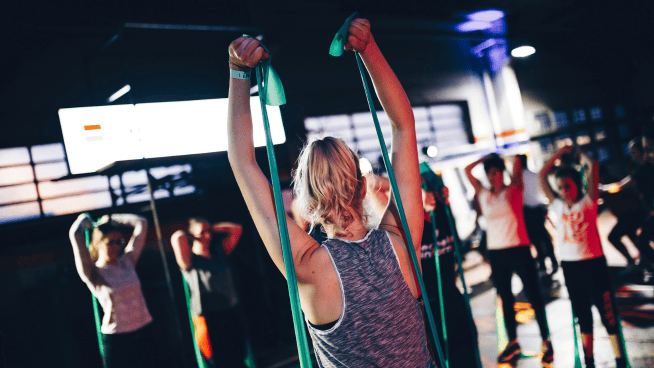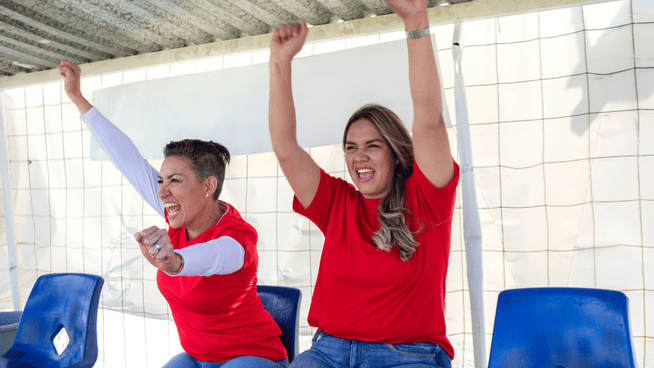Justin Gatlin Reveals the No. 1 Sprinting Mistake Slowing Down Young Athletes
Father Time can’t catch Justin Gatlin.
The 35-year-old American sprinter may be one of the oldest athletes in his sport, but he’s still chasing down gold medals. Gatlin recently became the oldest 100-meter champion in the history of the IAAF World Championships.
One key for Gatlin’s mind-blowing longevity? A total overhaul of his mechanics. A few years ago, Gatlin dedicated himself to improving his biomechanics and becoming as efficient a runner as possible. His current running form is vastly different from the one he employed as a 25-year-old. “I tried to learn how to be biomechanically superior to my competitors, (which gives me an edge) even if our speed or our strength are equal,” Gatlin told STACK at the 2017 USATF Black Tie and Sneaker Gala.
When asked if he’s noticed any common problems with regards to biomechanics in young sprinters, Gatlin said he often sees “high knees” unwisely prioritized over ground force production. “Everybody in sprinting is so stuck on knee lift, knee lift. Getting your knees up high. But no one is focused on the power you need to put back into the ground,” Gatlin said. “So with that knee up, it’s coming back into the ground. Most sprinters and most coaches don’t emphasize how to be able to plant that foot back into the ground or how to be able to push off that step. So everybody kinda just steps down, and that foot goes dead or that leg goes dead or that stride goes flat, because all they’re worrying about is that next knee going up. So people need to be worried more about the power you put into the track, not so much about knees coming up off the track.”
Ground force is the amount of force you apply into the ground when you’re running. A lot of factors go into getting faster, but increasing ground force is a surefire way to see improvement. If an athlete can produce impressive amounts of ground force along with good sprint mechanics, proper knee lift will naturally occur. In that sense, high knee lift is more of a symptom of running fast—not the cause. That’s why it’s entirely possible to sprint with high knees and still fall drastically short of your true top-speed potential. To help increase your ground force production, Gatlin recommends a variety of resisted speed training exercises.
“Resistance training, for me, has always been the thing that’s going to push you over the edge. Pulling sleds, pushing sleds, things of that nature. So once you go and compete and start running, your body will still feel that resistance and you’ll be able to use (that power) on the track,” Gatlin says. Try one of these five resisted speed training methods to increase your ground force production.
Photo Credit: Shaun Botterill/Getty Images
READ MORE:
RECOMMENDED FOR YOU
MOST POPULAR
Justin Gatlin Reveals the No. 1 Sprinting Mistake Slowing Down Young Athletes
Father Time can’t catch Justin Gatlin.
The 35-year-old American sprinter may be one of the oldest athletes in his sport, but he’s still chasing down gold medals. Gatlin recently became the oldest 100-meter champion in the history of the IAAF World Championships.
One key for Gatlin’s mind-blowing longevity? A total overhaul of his mechanics. A few years ago, Gatlin dedicated himself to improving his biomechanics and becoming as efficient a runner as possible. His current running form is vastly different from the one he employed as a 25-year-old. “I tried to learn how to be biomechanically superior to my competitors, (which gives me an edge) even if our speed or our strength are equal,” Gatlin told STACK at the 2017 USATF Black Tie and Sneaker Gala.
When asked if he’s noticed any common problems with regards to biomechanics in young sprinters, Gatlin said he often sees “high knees” unwisely prioritized over ground force production. “Everybody in sprinting is so stuck on knee lift, knee lift. Getting your knees up high. But no one is focused on the power you need to put back into the ground,” Gatlin said. “So with that knee up, it’s coming back into the ground. Most sprinters and most coaches don’t emphasize how to be able to plant that foot back into the ground or how to be able to push off that step. So everybody kinda just steps down, and that foot goes dead or that leg goes dead or that stride goes flat, because all they’re worrying about is that next knee going up. So people need to be worried more about the power you put into the track, not so much about knees coming up off the track.”
Ground force is the amount of force you apply into the ground when you’re running. A lot of factors go into getting faster, but increasing ground force is a surefire way to see improvement. If an athlete can produce impressive amounts of ground force along with good sprint mechanics, proper knee lift will naturally occur. In that sense, high knee lift is more of a symptom of running fast—not the cause. That’s why it’s entirely possible to sprint with high knees and still fall drastically short of your true top-speed potential. To help increase your ground force production, Gatlin recommends a variety of resisted speed training exercises.
“Resistance training, for me, has always been the thing that’s going to push you over the edge. Pulling sleds, pushing sleds, things of that nature. So once you go and compete and start running, your body will still feel that resistance and you’ll be able to use (that power) on the track,” Gatlin says. Try one of these five resisted speed training methods to increase your ground force production.
Photo Credit: Shaun Botterill/Getty Images
READ MORE:











